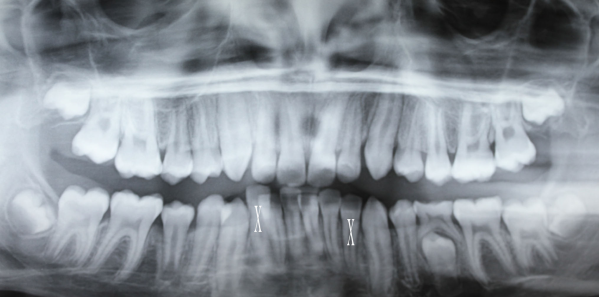A guide to help prevent extraction of the wrong tooth on referral from an orthodontist by Dr Steven Burlinson
Removal of an incorrect tooth can be a traumatic experience for all concerned, but this avoidable error unfortunately still occurs in dentistry, most commonly seen in a situation where one practitioner has requested that a second practitioner extract the tooth. A good example of this is when an orthodontist requests the extraction of teeth be undertaken by a GDP.
Preoperative verification
It is good to begin with a full and clear understanding of the end point you wish to achieve and in order to do this, you need to obtain a clear, concise and recent referral letter from the orthodontist:
- Stating which teeth are to be extracted. Teeth indicated using FDI notation as well as longhand descriptive notation is the most helpful way of doing this, for example, 'please remove 14, 24, 35 and 45 - the upper first premolars and lower second premolars'. In the case of an identical supernumerary lateral – a descriptor such as ‘the most distal or palatally placed incisor in the quadrant’ is the most helpful to avoid confusion.
-
A chart/diagram with the teeth in question clearly marked with a bold X.
-
A copy of the radiograph with the teeth marked with a bold X.
-
An intraoral picture with the teeth marked would be helpful when there is ambiguity i.e. In cases involving supernumeraries, deciduous, partially erupted or ectopically erupted teeth or teeth that have drifted mesially into another tooth’s position.
Example case
A patient with two lower supernumerary incisors.
Clear and concise instruction could include:
-
FDI description, for example, 32S and 42S.
-
Longhand description 'most distal of permanent lower lateral incisors'.
-
Marked up x-rays.

A digital x-ray or picture can be easily modified using a photo editing program such as Windows Paint or Adobe Photoshop to mark the tooth with a bold X for extraction.
On review of the referral information provided, if there is any doubt or confusion as to which teeth are to be extracted, it is always prudent to ring the referring orthodontist and confirm. While this may seem to be an unnecessary delay, it can save a lot of heartache further down the track.
Pre-examination
During your pre-operative discussions, confirm with patient and/or parent or guardian which are to be extracted to ensure the patient’s expectations match the referral letter.
Verify and identify the tooth to be extracted using a patient mirror. Again, if there is any confusion regarding the correct tooth, then call the referring orthodontist.
Advise your dental assistant which tooth/teeth you are planning to extract to enable them to have your required instruments ready, and also, to be able to prompt you, if required.
Examination
Use the examination to identify teeth and confirm that the extraction plan makes sense and check that there are no adjacent carious or heavily restored teeth that may be better candidates for extraction. If there is doubt again, contact the orthodontist and document the discussion. It is also better to identify teeth that should be restored prior to orthodontic banding.
Double check and pause
Have the referral letter and radiograph placed so it is easily reachable and visible. The radiograph should be checked for correct orientation.
Re-check the referral letter for which teeth are to be removed.
Place local anaesthetic and wait for adequate anaesthesia.
Double check the referral letter and then count back from the midline til you get to the tooth in question. Eye the tooth and pause... Once you are sure, then proceed.
Summary
Taking the time to get this critical aspect of a patient care right, is time well spent. It is too easy to rush forwards, particularly if we are tired, running late, or feeling pressured or stressed, without undertaking the proper checks and balances.
Measure twice... Cut once.